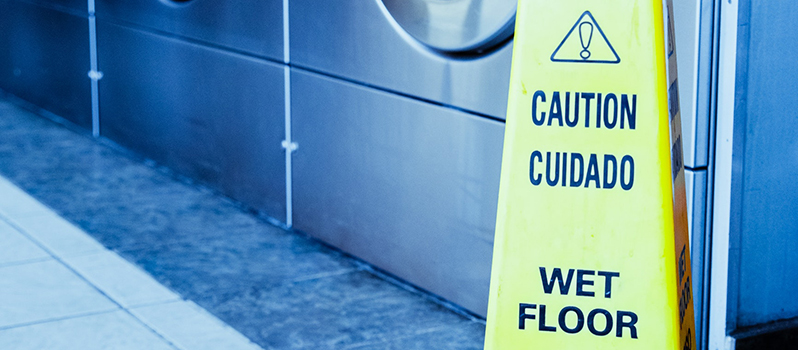
Take Measures to Prevent Slip and Fall Accidents
By Sabine Voigt, Loss Control Consultant
How many times have you been walking across a new floor and all of a sudden, your feet slip out from under you? According to the Consumer Product Safety commission (CPSC), floors and flooring materials contribute to more than 2 million fall injuries each year. Most of them are preventable with just a few changes in how you take care of these areas. Some of the most common slip and fall hazards are:
- Obstacles cluttering or blocking hallways
- Improper floor surfaces
- Uneven surfaces
- Wet areas
- Oil/grease spills
- Loose surfaces
- Hidden steps
- Slick surfaces
- No visible markers and inadequate lighting
Comprehensive inspections coupled with ongoing preventive actions will help to reduce the risks of slip and fall accidents. A good approach is to focus on the high-risk areas then move to all other areas of the premises. High-risk areas include those that have a lot of traffic or may get wet. The Occupational Safety and Health Administration recommends that walking surfaces have a slip resistance, or minimum static coefficient of friction, of 0.5.
Some steps you can take to prevent incidents are:
- Posting a “Caution – Wet Floor” sign to alert people to be careful
- Placing walk-off mats at entrances
- Installing safety strips and surface-texturing treatments
- Reviewing procedures for inspecting, maintaining and cleaning your floors. Procedures should be in writing and strictly followed.
- Training employees on proper maintenance techniques. It is important that any floor wax, polish, sealant, cleaner or other substances applied to the floor surface are used properly and according to manufacturer specifications.
- Installing slip-resistant flooring in higher traffic commercial areas, such as an apartment laundry room
- Installing sheet vinyl flooring to reduce seams and eliminate the problems of loose tiles
By completing comprehensive inspections and gathering appropriate documentation about the construction, maintenance and safety measures that are in place, it is possible to identify many of the present and observable hazards when evaluating for potential slip and fall losses. Some may be hidden and not recognized until after the loss and an engineer’s assessment into the cause of loss.
Please reach out to us with questions about slip and fall loss exposures or for help with research.
